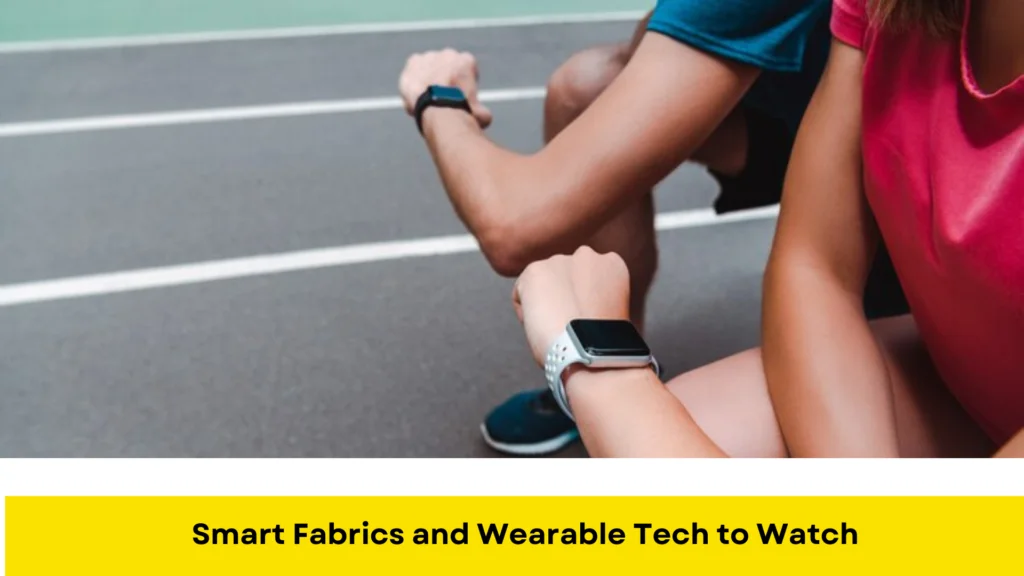Smart Fabrics and Wearable Tech. You can feel anxious about this comment because you are educated and well-dressed. With smart watches, phones, automobiles, and buildings all around us, being smart means a lot more than it used to. An unbelievable prediction suggests that by 2025, as much as 10% of all tech gadgets will incorporated into our garments. It’s not just a number; it’s the beginning of a huge shift in how our clothes and gadgets created. Picture a shirt or jacket that not only keeps you warm or makes you look good, but also turns into a smart device that does all of this without you even knowing it.
The time when garments only covered our bodies is coming to an end. It’s time for garments to talk to us, keep us safe, and give us what we desire. It’s not just a fad; it’s a revolution that changes the meaning of garments. Smart textiles, also known as e-textiles or intelligent textiles, are a new kind of advanced alloy that has sensors, electronics, and ways for people to interact with the fabric built into it. The new creative fabrics won’t merely be like regular materials in terms of how they feel. They will react, see, and talk to the user and the things around them.
Posture and movement tracking

“Smart textiles” is a broad term that covers several kinds of materials that can sense their surroundings, change to fit different situations, and interact with other things. Putting electronic elements and textile-based sensors into the fabric in a careful way makes these textiles. There are two main kinds of these high-tech fabrics: passive smart fabrics and active smart fabrics. When something happens outside of active smart fabrics, they can sense it and respond. Form memory alloys, electroactive polymers, and thermochromic dyes are some of the materials that can used to construct fabrics with fibers that can change color, form, or stiffness as they exposed to different stimuli.
This is termed responsiveness. Active smart fabrics will probably be used in clothes that change with the weather, clothes that fit the person, and clothes that keep you warm. On the other side, passive smart fabrics don’t modify the fabric’s properties; instead, they keep an eye on the person or their surroundings and gather data about them. These types of fabrics can blended with electrical materials, reactive textile materials, and nanoparticles because they need to be able to perform things like protect against UV rays, make the air cleaner, and keep an eye on the environment.
Challenges and innovations in smart textile technology

Active smart fabrics are better than passive smart fabrics in giving out critical data and information for a lot of different purposes, like healthcare, military security, and the workplace. You can also group smart textiles by the special materials and textile composites that were utilized to manufacture them, in addition to the groups that have already been mentioned. Researchers and manufacturers are continually looking for new ways to employ and add the newest technologies, such as conductive materials and nanoparticles, to textile fabrics to make smart fabrics more helpful and powerful.
Smart fabric technology’s major goal is to make electronics and fabrics work together perfectly. This is what gadgets you can wear are all about. This kind of integration will let you develop fabrics that do more than just look and feel beautiful. They will also be able to track their health, change colors or patterns dependent on the weather, and work with other devices, including cellphones. To have the fabric react to items in the environment or things the user does and do things it normally wouldn’t do, conductive threads, sensors, and other electrical pieces are weaved into the strands.
Exploring sustainable practices in smart textile manufacturing

To make smart textiles, sensors can printed on the fabric’s surface or woven or embroidered into the fabric. They can read things like temperature and humidity from the outside, or they can keep an eye on things like heart rate and muscle activity. Wearable electronics are changing the way we think about the garments and accessories we wear, and smart textiles can be quite helpful in this area. Wearable technology is extremely helpful in the health and fitness industry, as smart texts used to keep track of activities and health in real time. Smart textiles can be used in wearable technology to keep an eye on your vital signs, movements, and overall health all the time.
Smart textiles can help doctors and people who live healthy lifestyles see the whole picture of a person’s health. This helps them detect problems early and give the proper advice on how to repair them. Smart textiles have a number of other uses than health and fitness. For instance, they can revolutionize how people use interactive clothes and fashion. These high-quality materials have sensors, actuators, and reactive properties that let the garment alter to meet the user’s needs and wants. Smart textiles are making us rethink how we think about fashion and technology.
Future of Wearable Technology

They are bringing in a new group of energetic people who use the benefits of sports and fitness. These could be fabrics that change when the temperature or humidity varies, or clothes that let the wearer feel or see things. Smart garments and wearable electronics make it possible for our clothes and accessories to be fully functional, fully interactive, and able to mix form and function. Smart textiles may also watch the user’s posture and movements in addition to keeping an eye on important signs.
These new types of fabric can provide a full image of how active the person is, how well they sleep, and even find any prospective musculoskeletal health concerns by using a mix of sensors that respond to changes in pressure, tension, and body posture. You can use this information to help you sit up straighter, do better at physical therapy, and make better health decisions. One of the hardest things about producing smart fabrics is that it takes a long time to manufacture even one prototype. But as more people hear about smart textiles, people are coming up with ways to fix these issues.



